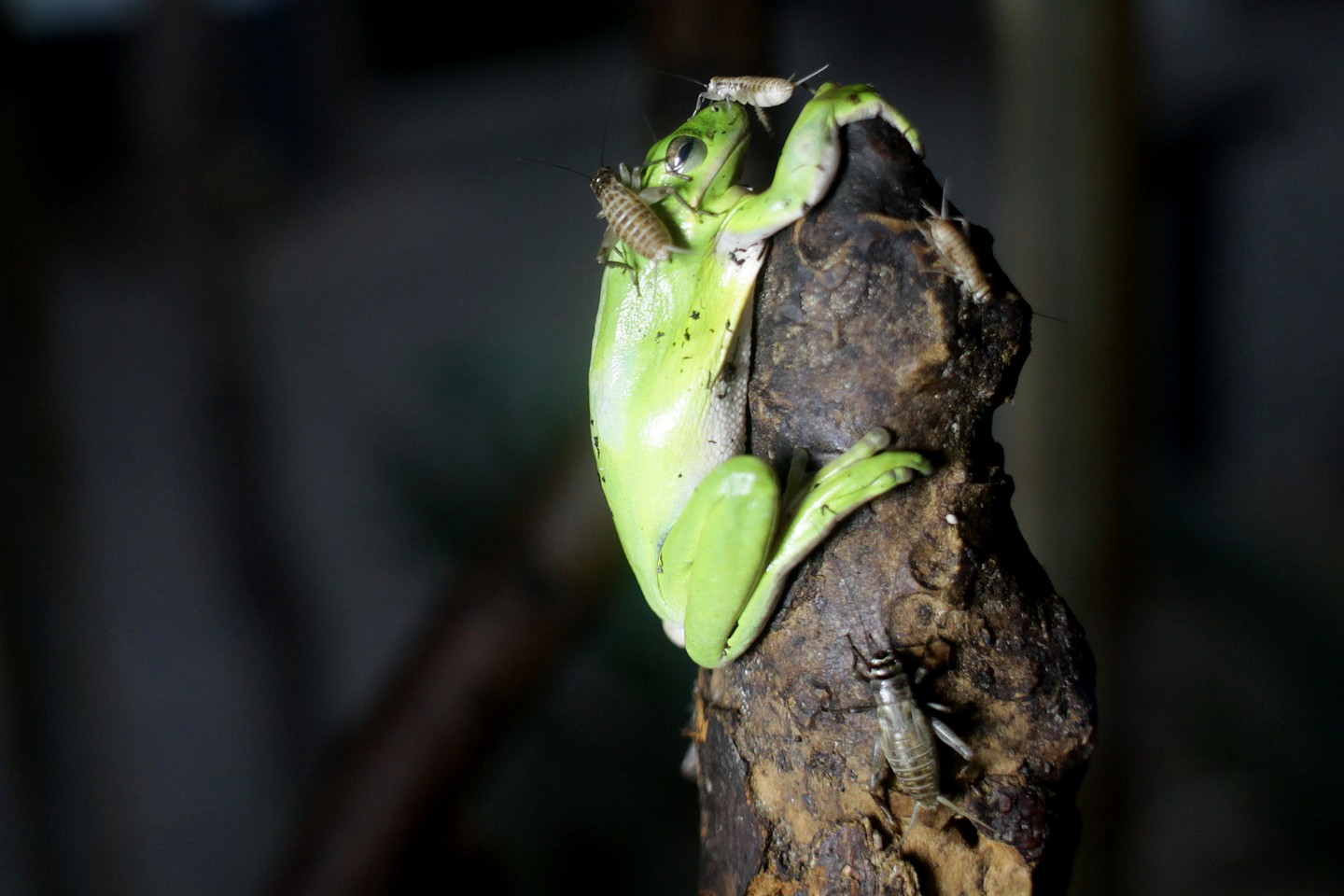- Understanding the nocturnal habits and behavior of green treefrogs.
- Importance of habitat preferences and environmental requirements for green treefrogs.
- Dietary needs and the role of green treefrogs in local ecosystems.
- Challenges faced by green treefrogs in the wild and the significance of conservation efforts.
- How human activities influence the survival and proliferation of green treefrogs.
Green treefrogs, known scientifically as Hyla cinerea, exhibit remarkable adaptability and an intriguing set of behaviors, especially being nocturnal creatures. The distinct habit of these frogs staying active during the night is primarily a survival mechanism. Being nocturnal offers a strategic advantage; they avoid the numerous daytime predators by being active when these predators are less active. These frogs are often spotted near artificial lights such as porch lights. This behavior isn’t arbitrary. The lights attract a plethora of insects, making such locations a lucrative hunting ground for frogs. Their shy nature is another adaptation that helps them avoid detection by both predators and scientists.
The habitats essential for the thriving of green treefrogs are predominantly located near water sources like ponds, swamps, and marshes. Such environments provide an ample and consistent supply of insects, a crucial component of their diet. Moreover, the proximity to water facilitates egg-laying and provides a refuge from terrestrial threats. Despite their need for watery environments, green treefrogs are not dependent on deep waters; rather, they prefer shallow, stagnant waters that do not host fish, which are potential predators of tadpoles. This preference helps optimize both safety and resource availability, ensuring they find the best possible conditions for breeding and sustenance.
Diet plays a significant role in their life cycle and ecological contribution. Green treefrogs primarily feed on insects, including flies, mosquitoes, and other small arthropods. This diet is not only crucial for their survival but also positions them as significant regulators of insect populations in their habitats. By controlling these populations, green treefrogs inadvertently maintain a balance in the ecosystem, supporting the health and productivity of their environment. Such interactions highlight the complexity and interconnectedness of ecological systems, where even a single species can have profound impacts on its surroundings.
However, despite their adaptability, green treefrogs face substantial challenges. Urban development, pollution, and climate change pose direct threats to their natural habitats. Draining wetlands for agriculture or infrastructure development destroys crucial breeding grounds. Similarly, water contamination from pesticides and other pollutants can lead to fatal consequences, not just for the frogs but also for the broader ecosystem. Conservation efforts are pivotal in safeguarding these ecologically valuable amphibians. Protecting and rehabilitating wetlands, along with implementing sustainable agricultural practices, can create a supportive environment for their survival.
Human influence significantly impacts the survival of green treefrogs. Urban sprawl has led to habitat fragmentation, causing isolated populations with reduced genetic diversity. Pollution, from pesticides to industrial runoff, contaminates their breeding grounds, further threatening their proliferation. Nonetheless, awareness and proactive conservation strategies can turn the tide. By educating the public and prioritizing eco-friendly policies, society can support these frogs, ensuring they continue to contribute to their ecosystems.
In concluding an examination of green treefrogs, it becomes evident how their survival is intricately linked with environmental health and human activity. Addressing the challenges they face requires a united front of scientific inquiry, community action, and sustainable practices. Through a comprehensive understanding of their habits, needs, and ecological roles, we can better appreciate these nocturnal frogs and the pivotal role they play in maintaining ecological equilibrium.
*****
Source Description
So many bugs, so little time!
Green treefrogs are the ultimate night owls. 🐸🌙 Shy and nocturnal, you’ll spot them near porch lights munching on bugs. They love their ponds, swamps, and marshes, staying within 100 yards of water. Quiet, cozy, and always on bug patrol! 🦗✨


